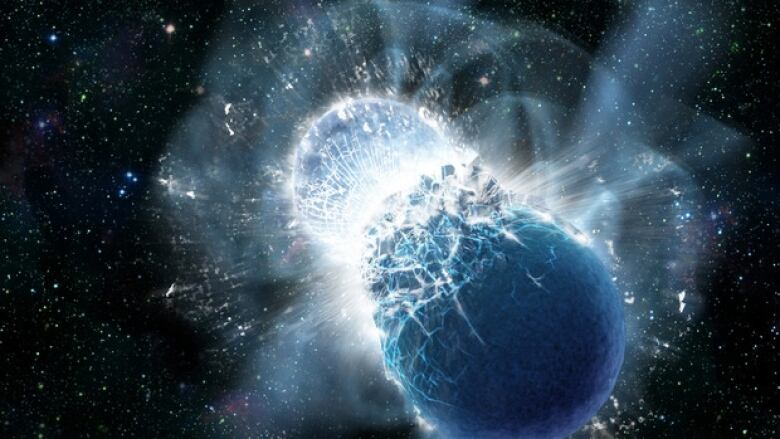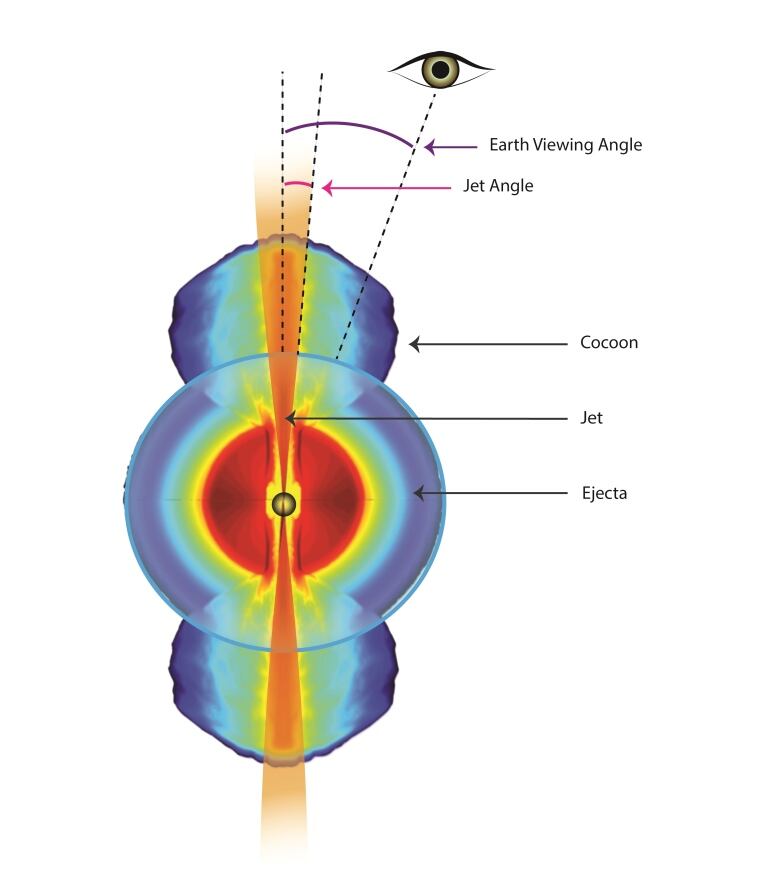Massive stellar merger produces cosmic 'burp' travelling at near speed of light
Stream of particles originally seemed to be moving at four times speed of light, an impossibility

In October 2017, scientists announced the observation of a spectacular cosmic event: the merger of two extremely dense stars 130 million light-years away, the first ever to be seen.
Now, using radio telescopes, scientists have discovered a narrow jet of particles from that event moving at nearly the speed of light, travelling through interstellar space.
The merging pair were extremely dense bodies called neutron stars: just one teaspoon of it would weigh more than a billion tons on Earth.
The original merger was not only observed visually, but it also created a gravitational wave picked up by the Laser Interferometer Gravitational Observatory (LIGO) and Virgo experiment here on Earth.

Gravitational waves are ripples in space-time, first predicted by Albert Einstein in 1916 in his general theory of relativity. They went undetected until 2015 when these highly sensitive detectors picked up the wave from two merging black holes.
After the merger of the two neutron stars, the pair collapsed into a black hole, an object in space that is so gravitationally strong, nothing can escape its grasp. However, it also created a rapidly spinning disk, the source of the cosmic belch that astronomers observed, in the form of a short gamma ray burst or GRB. But it also produced something else: a cocoon.
"What creates these jets isn't known," said lead author of the paper published in Nature. Kunal Mooley, an astronomer at the National Radio Astronomy Observatory (NRAO) and Caltech. "The mechanism is not known, but once it is produced, now we know from this event that it interacts strongly with the surrounding neutron-rich material to produce this so-called cocoon."
The big question for astronomers was whether or not the jets would choke out in the cocoon or break through it.
Using three telescopes the Karl G. Jansky Very Large Array, the Robert C. Byrd Green Bank Telescope and the National Science Foundation's Very Long Baseline Array the scientists discovered the source of a radio emission had moved. The emission was first seen 75 days after the merger. However, 230 days later, it seemed to have moved two light years, and only a fast-moving jet could explain its speed.
Initially, the motion of the region of particles appeared to be moving four times the speed of light, which is not possible.
It only appeared that way due to a process called superluminal motion, which occurs due to a few factors.

First, the jet is quite narrow (only five degrees) and pointed only 20 degrees away from Earth. On top of that, it is moving at 97 per cent the speed of light. Put all that together, and it gives us the apparent motion of the jet (not the actual one).
Eye on the universe
The discovery of this jet has multiple benefits to science.
The obvious one is that it teaches astronomers about these types of merger events: how they happen, what they produce and what happens afterwards.
But Kunal said that there are other ways it can contribute.
"It tells us a lot more about the physics of what is going on," Mooley said. "For example, in a different work, we showed that with this particular measurement we can also calculate the cosmological parameters such as the Hubble Constant. So there's a lot of physics that can come out of these observations."
The Hubble Constant is the calculation for the expansion of the universe, which helps scientists determine its size and age.
Mooley said that he's happy with the discovery, though he was particularly surprised by how fast the jet's apparent motion, four times the speed of light.
"This is somewhat of an exceptional jet, I would say," Mooley said.












_(720p).jpg)


 OFFICIAL HD MUSIC VIDEO.jpg)
.jpg)



























































































